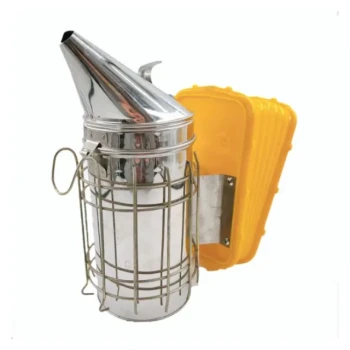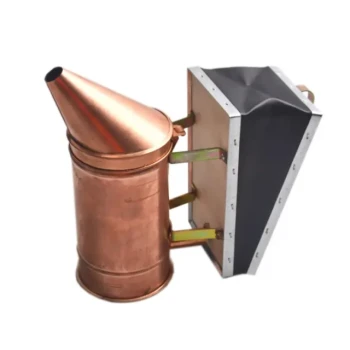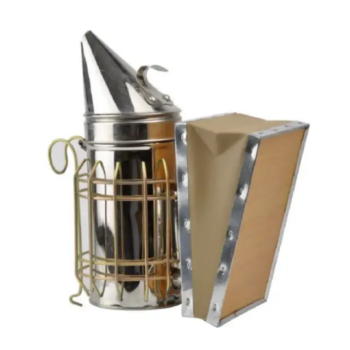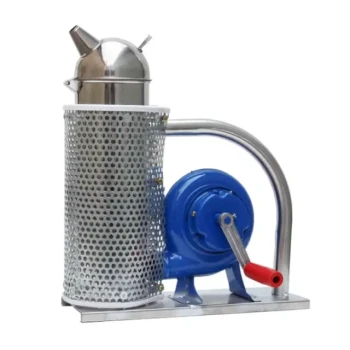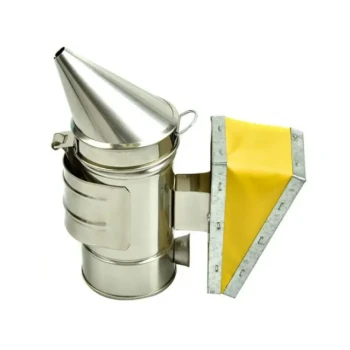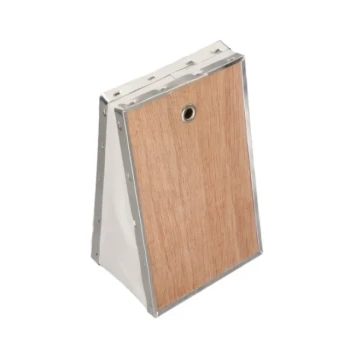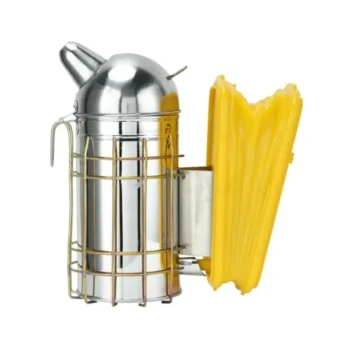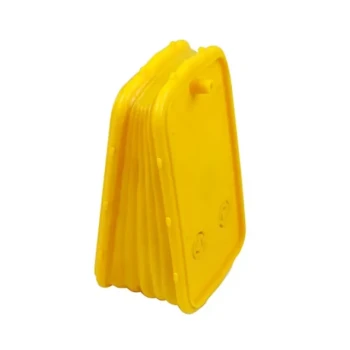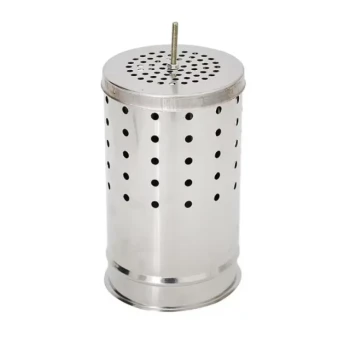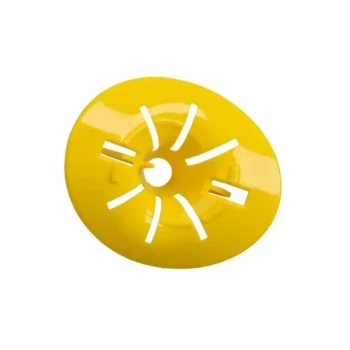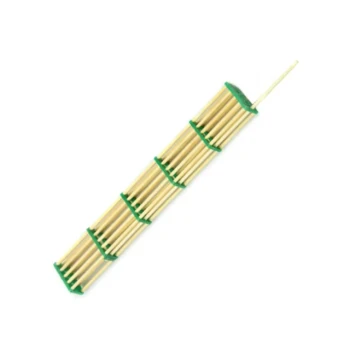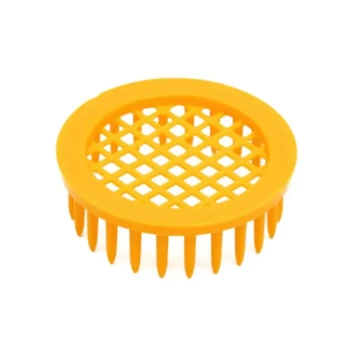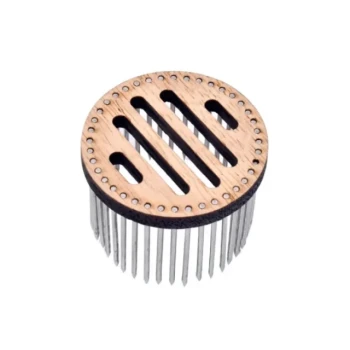Ultimately, the "best" fuel for a bee smoker is any natural, untreated material that smolders consistently to produce thick, cool, white smoke. While many options work well, beekeepers often favor materials like punky wood, cotton fabric scraps, or untreated burlap because they are easy to light and burn slowly without producing excessive heat.
The specific material you burn is less important than the quality of the smoke it produces. Your goal is always to create a gentle, cool smoke that calms the bees by masking their alarm pheromones, not to create hot, dark smoke that agitates them and simulates a forest fire.
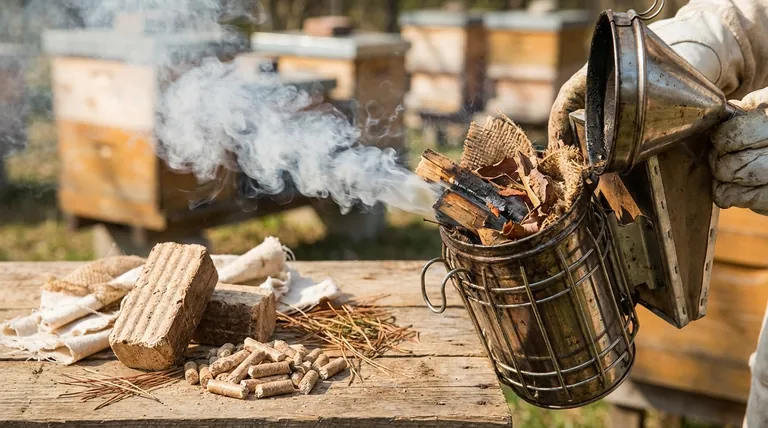
Why Smoke Is Used in Beekeeping
To effectively manage a hive, you first need to understand why smoke works. It is not a sedative, but an intelligent manipulation of the bees' natural instincts.
Masking Alarm Pheromones
When a bee feels threatened or is crushed, it releases an alarm pheromone. This chemical signal instantly alerts other bees to a potential danger, often triggering a defensive (stinging) response from the entire colony. Gentle smoke effectively masks these pheromones, preventing a chain reaction of aggression and keeping the hive in a manageable state.
Triggering a Feeding Response
The presence of smoke also triggers a secondary, more primal response. Bees associate smoke with a forest fire, their ancestral threat. Their instinct is to prepare to abandon the hive. To do this, they gorge themselves on honey to have enough energy for the journey. A bee with a full stomach is less agile and physically less inclined to sting, making it more docile.
Principles of Good Smoker Fuel
The effectiveness of your smoker depends entirely on the fuel you choose and how you manage the burn. The key is control.
What to Look For
A good fuel source should be completely dry and free of chemicals, plastics, or glue. It should smolder rather than burn with an open flame. The ideal fuel lights easily, burns slowly and consistently, and produces a dense but cool volume of smoke.
What to Avoid
Never use materials that produce hot, dark, or acrid smoke, as this will only anger the bees. Avoid green leaves, wet wood, or any pressure-treated lumber. Likewise, stay away from synthetic materials, glossy printed paper, or cardboard with tape and glue, as these can release toxic fumes harmful to both you and your bees.
Common and Effective Fuel Sources
Many readily available materials make excellent smoker fuel. The best choice often comes down to what you can source reliably and for free.
Natural Plant Materials
- Punky Wood: This partially rotted, spongy wood is a beekeeper favorite. It smolders for a long time and produces excellent cool smoke.
- Dry Wood Shavings or Pellets: Untreated pine shavings or wood pellets (for animal bedding or smokers) work very well.
- Dry Bark, Pine Needles, or Straw: These are easy to gather and light quickly, often used as a starter on top of a slower-burning fuel.
- Dry Corn Cobs or Peanut Shells: Once completely dried, these agricultural byproducts burn slowly and effectively.
Recycled Materials
- Paper Egg Cartons: Cardboard egg cartons (not styrofoam) are a popular choice. They are easy to light and smolder well.
- Untreated Burlap or Cotton: Scraps from burlap sacks or old 100% cotton clothing (like denim jeans) are excellent slow-burning fuels.
Understanding the Trade-offs: Smoking vs. Alternatives
While a traditional smoker is the standard, it is not the only option. Understanding the alternatives is key to making the right choice for the situation.
Traditional Smoker: Pros and Cons
A smoker is highly effective for deep inspections and managing aggressive colonies. However, it requires practice to maintain, presents a potential fire hazard in dry conditions, and can be cumbersome to carry and manage along with other tools.
Liquid "Smoke" and Sugar Water: Pros and Cons
Alternatives include sprays of sugar water (1:1 ratio) or commercial "liquid smoke" products. These are extremely convenient, pose no fire risk, and are often sufficient for quick checks or working with very docile bees. Their primary downside is that they are less effective for long inspections or with defensive colonies, as their calming effect can wear off quickly.
Making the Right Choice for Your Goal
Your method for calming bees should adapt to the hive's temperament and the task at hand.
- If your primary focus is a full, deep-hive inspection: A traditional smoker with a slow-burning fuel like punky wood or burlap is the most reliable tool for the job.
- If you are performing a quick check or adding a feeder: A simple spray of 1:1 sugar water is often sufficient and less disruptive to the colony.
- If you are working with an exceptionally docile colony: You may find that a sugar water spray or even no smoke at all is needed for routine work.
- If you operate in a fire-prone area or want maximum convenience: A commercial liquid smoke spray provides a safe and effective alternative to a lit smoker.
Ultimately, mastering the art of calming your bees is a fundamental skill that makes beekeeping safer, more effective, and more enjoyable.
Summary Table:
| Fuel Type | Examples | Key Benefit |
|---|---|---|
| Natural Plant Materials | Punky wood, pine shavings, straw | Long, consistent smolder; cool smoke |
| Recycled Materials | Burlap, cotton scraps, cardboard egg cartons | Easy to light; slow-burning |
| What to Avoid | Green/wet wood, synthetic materials, treated lumber | Prevents toxic fumes and bee agitation |
Ready to master hive management with the right equipment?
As a trusted wholesale supplier for commercial apiaries and distributors, HONESTBEE provides the durable, reliable beekeeping supplies you need for efficient and safe operations. From high-quality smokers to protective gear, our products are designed to support your success.
Contact our team today to discuss your supply needs and discover how we can help your business thrive.
Visual Guide
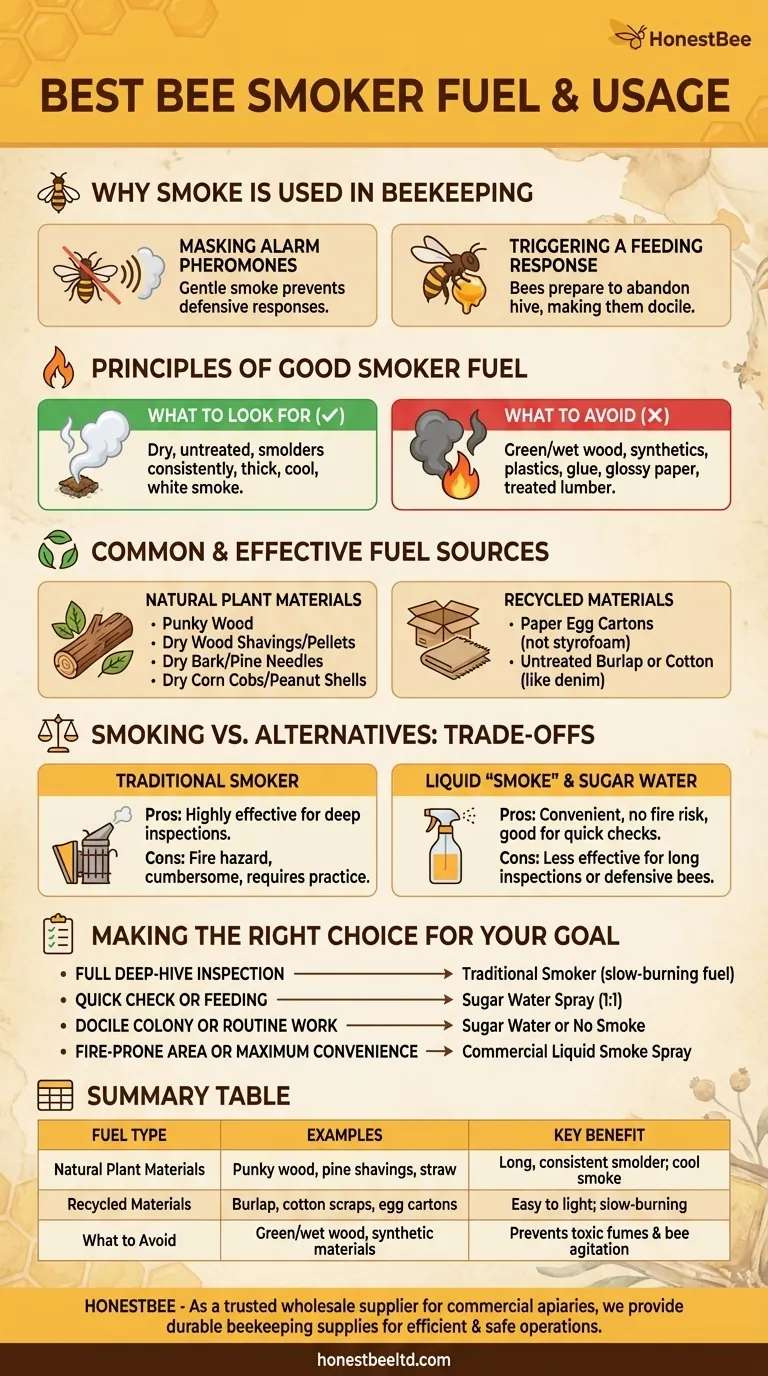
Related Products
- 54-Piece Smoker Fuel Pellets for Beekeeping Beehive Smoker Fuel
- Economy Galvanized Beekeeping Honey Bee Smoker for Wholesale
- Professional Bee Smoker with Elongated Spout and Durable Bellows for Beekeeping
- Premium Traditional Copper Bee Smoker with Bellows
- Stainless Steel Honey Bee Smoker Hive and Honeycomb Smoker for Beekeeping
People Also Ask
- What fuels are recommended for beehive smokers? Master the Art of Calm, Controlled Inspections
- What is best to burn in a bee smoker? Master the Layered Fuel Technique for Calm Hives
- What can I use for bee smoker fuel? Choose Safe, Natural Materials for a Calm Hive
- What is the best bee hive smoker fuel? Choose Natural, Slow-Burning Fuel for Calm Bees
- What are important considerations when choosing smoker fuel? A Guide to Safe, Effective Beekeeping


